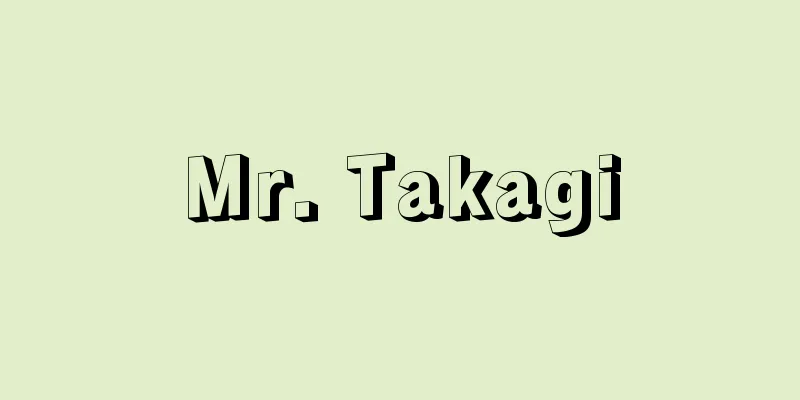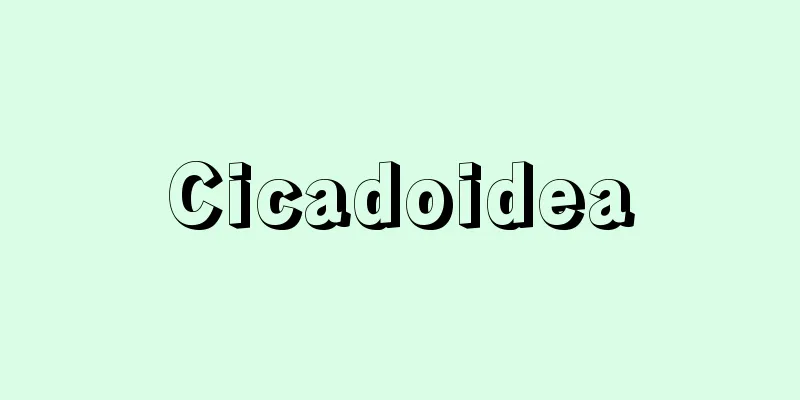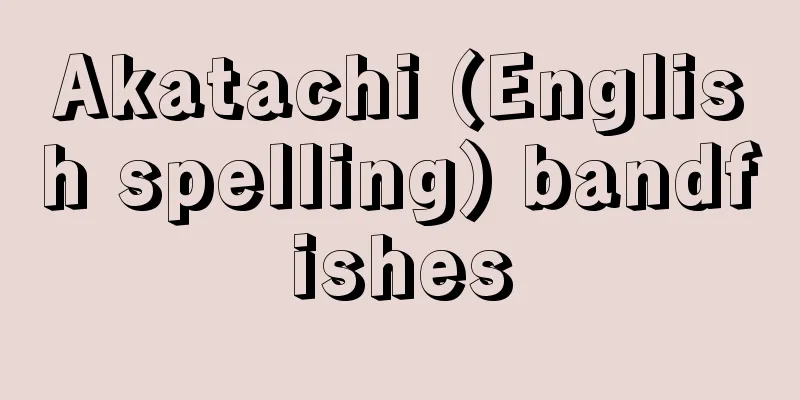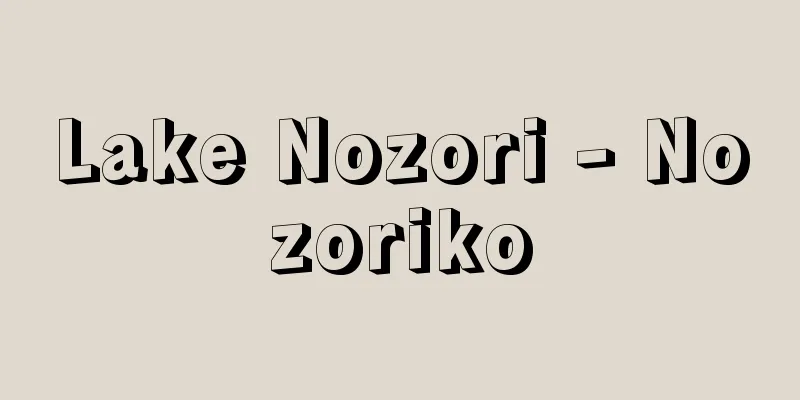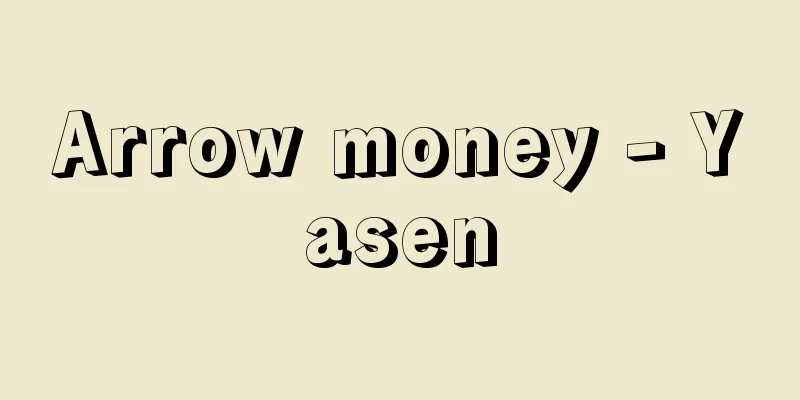Haikai - Haikai

|
A term used in waka, linked verse, and haikai. It was also mistakenly written as "haikai." It means the humor of an actor, or humor. The 58 waka poems collected in volume 19 of the Kokin Wakashu as "kaikai ka" are all humorous in content. "Haikai no renga," a type of linked verse, means humorous linked verse, and was dismissed as a side job for linked verse masters, but as it escaped its subordinate position to pure linked verse and became an independent genre of poetry and literature, it came to be abbreviated to just "haikai." The first haikai anthology was "Chikuba Kyoginshu" published in 1499 (Meio 8), but after 1524 (Taei 4), "Hinkai Renga Sho" ("Inu Tsukuba Shu") edited by Yamazaki Sokan was published, and between 1536 and 1540 (Tenbun 5-9) Arakida Moritake's "Moritake Senku" was published, which boosted the momentum for haikai independence. In the 17th century, Teimon haikai, led by Matsunaga Teitoku, was practiced on a national scale. Haiku was centered on humorous wordplay, but the use of metaphors and expressions fell into a routine, and it was overwhelmed by the Danrin haiku of Nishiyama Soin and others, which aimed for a fresher, more intense expression of humor. Danrin burned out in just a dozen years from the mid-1660s (mid-Kanbun period) to the 1670s (Enpo period), and from the 1690s (Genroku period) onwards, a graceful and emotional haiku style like that seen in the Shofu haiku of Basho and others was popular. At the beginning of the 18th century, the history of haiku took a major turn from a focus on renku to a focus on hokku, but neither Buson nor Issa abandoned renku. It was only in modern times that renku was rejected and hokku was transformed into haiku. [Hiroyuki Inui] [References] | |Opening page by Moritake, copy held at the National Diet Library "Moritake's Thousand Verses" Source: Shogakukan Encyclopedia Nipponica About Encyclopedia Nipponica Information | Legend |
|
和歌、連歌(れんが)、俳諧用語。誤って「誹諧」とも書いた。俳優の諧謔(かいぎゃく)、すなわち滑稽(こっけい)の意。『古今和歌集』巻第19に「誹諧歌」として収める58首の和歌は、ことごとく内容の滑稽な歌である。連歌の一体である「俳諧之連歌」は、滑稽な連歌の意で、連歌師の余技として言い捨てられていたが、純正連歌の従属的地位を脱し、詩文芸の一ジャンルとして独立するに伴い、「俳諧」とだけ略称されるに至った。最初の俳諧撰集(せんしゅう)は1499年(明応8)成立の『竹馬狂吟(ちくばきょうぎん)集』であるが、1524年(大永4)以後に山崎宗鑑(そうかん)編『誹諧連歌抄』(『犬筑波(いぬつくば)集』)が、1536~1540年(天文5~9)には荒木田守武(もりたけ)の『守武千句』が相次いで成り、俳諧独立の気運を高めた。17世紀に入ると、松永貞徳(ていとく)を盟主とする貞門(ていもん)の俳諧が全国的規模で行われた。俳風はことば遊びの滑稽を主としたが、見立(みたて)や付合(つけあい)がマンネリズムに陥り、より新鮮で、より強烈な滑稽感の表出をねらう、西山宗因(そういん)らの談林(だんりん)俳諧に圧倒された。談林は1660年代の中ごろ(寛文(かんぶん)中期)から1670年代(延宝(えんぽう)期)にかけてのわずか十数年間で燃焼し尽くし、1690年代(元禄(げんろく)期)以降は、芭蕉(ばしょう)らの蕉風俳諧にみられるような、優美で主情的な俳風が行われた。18世紀の初頭を軸として、連句中心から発句(ほっく)中心へと俳諧史は大きく転回するが、蕪村(ぶそん)も一茶(いっさ)も連句を捨てたわけではない。連句が否定され、発句が俳句へと変身を遂げたのは、近代に入ってからのことである。 [乾 裕幸] [参照項目] | |巻頭 守武著 写国立国会図書館所蔵"> 『守武千句』 出典 小学館 日本大百科全書(ニッポニカ)日本大百科全書(ニッポニカ)について 情報 | 凡例 |
Recommend
Battle of Okehazama
A battle between Imagawa Yoshimoto and Oda Nobunag...
Toubana (Toubana) - Clinopodium confine; wild basil
A perennial plant of the Lamiaceae family. It is w...
Eizan violet - Eizan violet
A perennial plant of the family Violaceae (APG cl...
Onchi
In the Middle Ages, a lord granted land to his se...
Cultivation rights
Generally speaking, it refers to the rights that ...
Affinity
The brand name of point makeup cosmetics sold by K...
Lissitzky, El
Born: November 10, 1890 in Smolensk [Died] Decembe...
Kirsch
Kirsch is a distilled alcoholic drink made from ch...
Warm core structure - Warm core structure
...Surface pressure is closely related to the tem...
Kawamata Power Station
…A multipurpose dam for flood control, water supp...
Unloading the boat
A ceremony held when a new ship is launched into t...
HOPE
A manga by Keiko Suenobu. It was serialized in Bes...
Legal Training and Research Institute
Established in 1947 as an affiliated institution ...
Qeshm [Island] (English spelling)
An Iranian island at the mouth of the Persian Gulf...
Weng Juan
[Born] Before 1183 [Died] A poet of the Southern S...

